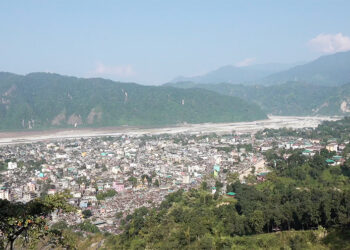In the era of instant headlines and breaking news, a group of Bhutanese journalists underwent training to tell stories that matter deeply and linger longer. A two-day workshop titled “News in Tales” concluded in Thimphu yesterday, offering local journalists a fresh perspective on narrative journalism, storytelling that blends truth with emotion.
 30 journalists from various media houses gathered to explore a new way of storytelling, one that goes beyond facts and figures to capture the heart of human experience.
30 journalists from various media houses gathered to explore a new way of storytelling, one that goes beyond facts and figures to capture the heart of human experience.
Jointly organised by the Embassy of Canada, Newsreel Asia, and the Bhutan Media Foundation with three trainers, the workshop aimed to strengthen journalists’ capacity to weave powerful, human-centred narratives.
 “There is a lot of potential for journalists in Bhutan and elsewhere to take it to the video format. During the session, I found the journalists to be very curious and interested. I am hopeful that they will use the learnings that they have acquired from our training,” said Surabhi Singh, a director and a producer with the Newsreel Asia.
“There is a lot of potential for journalists in Bhutan and elsewhere to take it to the video format. During the session, I found the journalists to be very curious and interested. I am hopeful that they will use the learnings that they have acquired from our training,” said Surabhi Singh, a director and a producer with the Newsreel Asia.
“This is a form of journalism which is non-confrontational, which is as per the culture here because it is not required to focus on villains, but heroes who are the common people. So, the focus is on suffering and not target politicians, parties or ideologies,” said Vishal Arora, a director and editor with the Newsreel Asia.
Through hands-on exercises, personal encounters, and interactive sessions, the participants explored how to cover complex and sensitive issues without immediate negative consequences for the characters, themselves or their audiences.
“To understand a story, all relevant stakeholders need to be involved. Most stories did not involve all of them. So, from now on, we can involve all of them while we report to disseminate fair and in-depth stories to the public,” said Tashi Tshewang, a reporter with Bhutan Today.
“It’s important that journalists get this kind of training. It’s my first time attending this kind of training in narrative journalism. I plan to utilise the knowledge shared by the experts here,” said Tshering Tenzin, a producer at the Kuzoo FM.
A senior producer with Kuzoo FM, Sumitra Pradhan said, “We have to know the new techniques or strategies to come up with new ideas. So, this kind of training will help me to come up with a constructive form of narrative journalism.”
As Bhutan’s media landscape evolves, narrative journalism could offer a new path forward, one that bridges facts and feelings. By listening and telling stories that truly matter it brings audiences closer to the realities behind the news.
Kelzang Chhophyel
Edited by Kipchu









